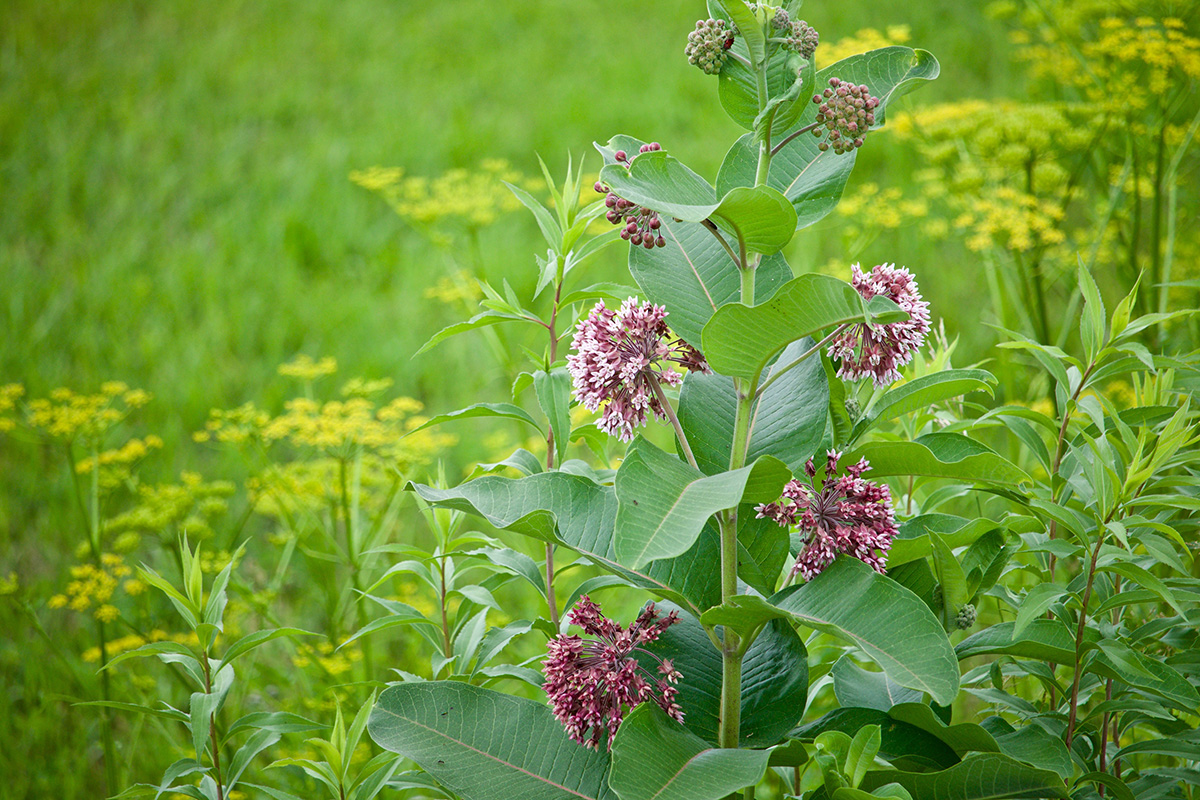
Why Milkweed Matters—A Keystone Plant for Pollinators
The critical role of Milkweed in monarch survival, pollinator health, and ecological restoration.
At Meadow Lab, we believe that meadows are more than beautiful—they’re living systems. And few plants illustrate that better than Milkweed (Asclepias). Asclepias tuberosa is a cornerstone of our Wildflower Seed mix—more than just a bold bloom, Milkweed is an ecological powerhouse that supports pollinators, protects biodiversity, and helps restore balance to disrupted landscapes.
Essential Host Plant for Monarchs
Milkweed is critical to the life cycle of the Monarch butterfly (Danaus plexippus). Monarchs will only lay their eggs on Asclepias species—the plant’s leaves are the exclusive food for their caterpillars. Without Milkweed, monarch larvae starve, and the butterfly's miraculous 3,000-mile migration from Mexico to Canada breaks down at its most vulnerable stage.
Once they reach adulthood, Monarchs feed on nectar from many flowers, pollinating plants along their migration route. But their journey—indeed their very survival—starts with Milkweed.
A Biodiversity Hotspot
Though Monarchs get the spotlight, Milkweed supports a vast array of beneficial insects. The USDA calls it “nature’s mega food market.” Over 450 insect species feed on or interact with Milkweed, including bees, beetles, wasps, flies, and more. You’ll often find multiple species on a single plant, forming miniature ecosystems in bloom.
The plant's nectar is rich in sugar—up to 3% sucrose—and its steady production across the season provides long-term fuel for pollinators. Milkweed also produces cardiac glycosides, chemicals that deter predators. Monarch caterpillars absorb these compounds and store them in their tissues, becoming toxic to birds and other predators. For the insects that feed on it, Milkweed is both food and protection.

Ecological Decline and Restoration
Habitat loss and herbicide use have led to a dramatic drop in Milkweed populations and, with it, an estimated 90% decline in Monarch numbers in recent decades. Urban expansion, monoculture agriculture, and roadside management practices have all taken a toll.
This is where restoration comes in. At Meadow Lab, we design seed mixes that prioritize ecological function. Including Milkweed isn’t just a design choice—it’s a strategy for rebuilding ecosystems from the ground up. Whether in a large-scale meadow or a modest city garden, Milkweed can make a measurable difference.
There are over 70 native species of Milkweed in North America, but a few stand out for wildflower meadow projects:
- Asclepias tuberosa (Butterfly Milkweed): Bright orange, compact, and drought-tolerant—ideal for sunny borders
- Asclepias syriaca (Common Milkweed): Tall and robust, this species naturalizes beautifully in open meadows
- Asclepias incarnata (Swamp Milkweed): Thrives in wetter soils—great near rain gardens or low-lying areas
When selecting Milkweed for your project, consider local species that match your site’s conditions. All of our Meadow Lab Wildflower Seed mixes are regionally tailored, so you can be confident you’re planting the right type for your landscape.
Plant with Purpose
Adding Milkweed to your meadow isn’t just about beauty—it’s about impact. It supports pollinators, stabilizes food webs, and helps reconnect fragmented habitats. At Meadow Lab, we believe every wildflower meadow should serve a larger purpose. Milkweed reminds us that small, thoughtful choices in the landscape can ripple outward—to butterflies, ecosystems, and future generations.



